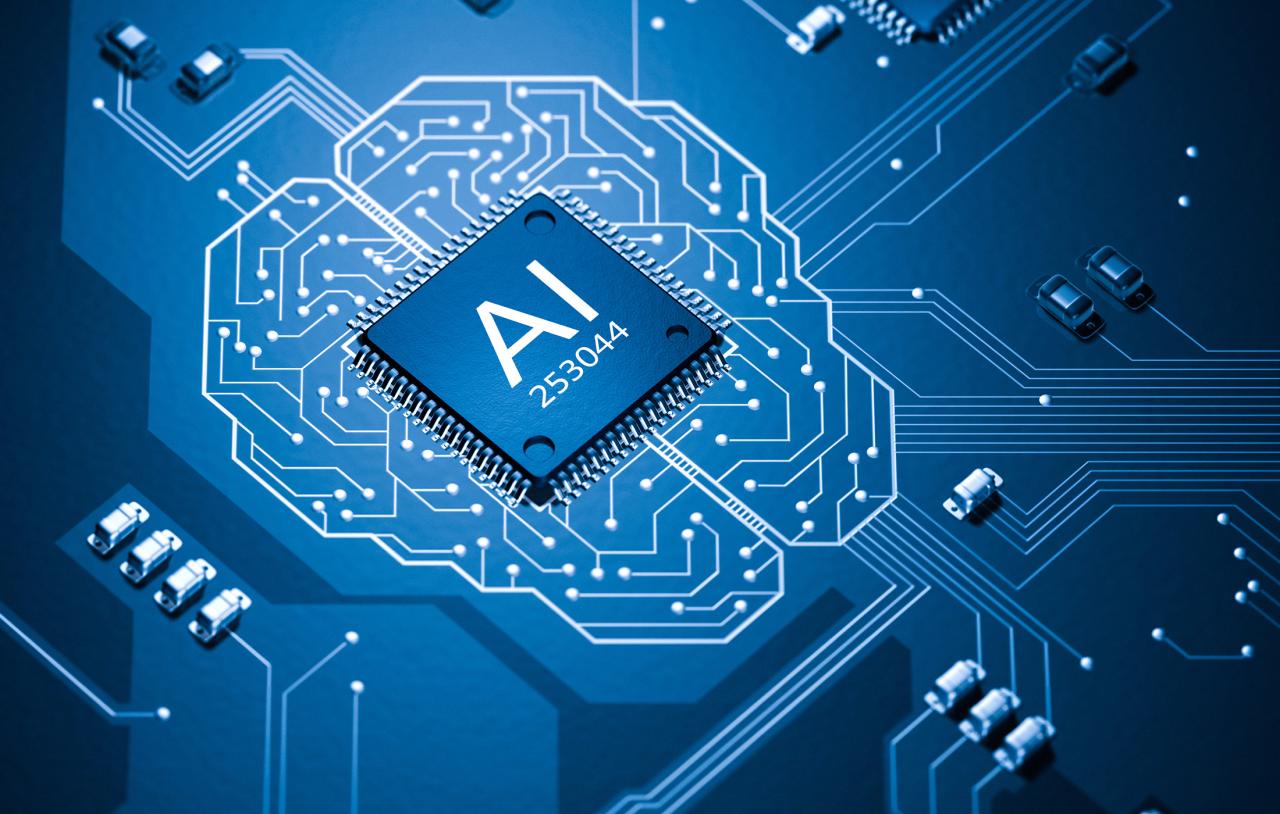In the swift current of technological advancement, Artificial Intelligence (AI) stands as both a beacon of innovation and a source of profound ethical and societal questions. As AI rapidly integrates into every facet of human life, from shaping our news feeds to powering critical infrastructure and influencing medical diagnoses, the imperative for robust and thoughtful AI regulations is no longer a distant whisper but a resounding global chorus.
Governments, international bodies, and advocacy groups worldwide are actively grappling with how to govern this powerful technology, aiming to harness its immense potential while mitigating its inherent risks. This comprehensive article delves into the core drivers behind the urgent call for AI regulations, exploring the key ethical and societal concerns they seek to address, the diverse regulatory approaches being proposed and implemented globally, and the significant challenges and immense opportunities that accompany this crucial endeavor.
Why AI Needs Governance

At its essence, AI regulation refers to the development and implementation of rules, laws, and guidelines designed to govern the design, development, deployment, and use of Artificial Intelligence systems. The primary goal is to ensure that AI technologies are developed and used in a manner that is safe, ethical, transparent, fair, and beneficial to society, while also fostering innovation.
The urgent need for AI regulation stems from the technology’s unique characteristics and its growing impact:
- Pervasive Influence: AI systems are increasingly making decisions that affect individuals’ lives (e.g., loan approvals, job applications, criminal justice, medical treatment), making their fairness and accuracy critical.
- Lack of Transparency (“Black Box” Problem): Many advanced AI models operate as “black boxes,” making it difficult to understand how they arrive at their decisions. This opacity hinders accountability and trust, especially in high-stakes applications.
- Potential for Bias and Discrimination: If AI systems are trained on biased data or developed with flawed assumptions, they can perpetuate and even amplify existing societal biases, leading to discriminatory outcomes.
- Autonomous Decision-Making: As AI systems become more autonomous, questions of responsibility and liability when things go wrong become paramount.
- Security Risks: Malicious actors could exploit AI vulnerabilities or misuse AI for harmful purposes, such as sophisticated cyberattacks, surveillance, or disinformation campaigns.
- Societal Disruption: AI’s impact on employment, privacy, and democratic processes necessitates careful societal management.
- Global Coordination: AI’s borderless nature demands international cooperation to prevent regulatory fragmentation and create a level playing field.
A. Key Ethical and Societal Concerns Driving AI Regulation
The ethical dilemmas posed by AI are at the heart of the regulatory push, guiding the principles and specific areas of focus for new laws.
- Bias and Discrimination:
- Problem: AI systems can perpetuate or amplify existing societal biases if trained on unrepresentative or historically biased data. This leads to unfair treatment based on race, gender, socioeconomic status, or other protected characteristics.
- Impact: Discriminatory outcomes in critical areas like facial recognition, hiring algorithms, credit scoring, and even criminal justice systems.
- Regulatory Aim: Mandate bias audits, require diverse training data, and establish fairness metrics to ensure AI systems are equitable.
- Privacy and Data Protection:
- Problem: AI relies on vast amounts of data, often personal. Its ability to infer sensitive information from seemingly innocuous data points poses significant privacy risks, enabling pervasive surveillance and profiling.
- Impact: Erosion of individual privacy, potential for misuse of personal data, and increased vulnerability to data breaches.
- Regulatory Aim: Reinforce data protection principles (consent, data minimization, purpose limitation), regulate biometric data use, and establish clear rules for AI’s access and processing of personal information.
- Transparency and Explainability:
- Problem: The “black box” nature of complex AI models makes their decision-making processes opaque. It’s difficult to understand why an AI system made a particular recommendation or classification.
- Impact: Lack of trust, difficulty in auditing AI systems for errors or bias, and challenges in challenging AI-driven decisions.
- Regulatory Aim: Mandate requirements for “explainable AI” (XAI) in high-risk applications, ensuring that AI decisions can be understood and justified.
- Accountability and Responsibility:
- Problem: When an AI system causes harm (e.g., an autonomous vehicle accident, an incorrect medical diagnosis, a flawed loan denial), it’s unclear who is legally and morally responsible.
- Impact: Undermines trust in AI, creates legal vacuums, and leaves victims without clear recourse.
- Regulatory Aim: Establish clear lines of liability for AI developers, deployers, and operators, ensuring mechanisms for redress and compensation.
- Human Oversight and Control:
- Problem: As AI systems become more autonomous, there are concerns about relinquishing too much control to machines, particularly in critical sectors.
- Impact: Risk of unintended consequences, reduced human agency, and potentially dangerous outcomes in fields like military applications (autonomous weapons systems).
- Regulatory Aim: Mandate “human-in-the-loop” or “human-on-the-loop” requirements for high-risk AI, ensuring meaningful human review and intervention capabilities.
- Safety and Robustness:
- Problem: AI systems can be brittle, prone to unexpected failures, or vulnerable to adversarial attacks (inputs designed to trick the AI).
- Impact: Risk of physical harm (e.g., in autonomous systems), system failures in critical infrastructure, and unreliable performance.
- Regulatory Aim: Establish standards for AI system testing, robustness, reliability, and security, ensuring they operate safely and predictably.
- Impact on Labor and Employment:
- Problem: AI-powered automation will undoubtedly transform job markets, potentially leading to widespread job displacement in some sectors while creating new roles in others.
- Impact: Socio-economic disruption, widening inequality if not managed proactively, and a need for massive workforce reskilling.
- Regulatory Aim: Focus on policies related to workforce transition, education, and potentially social safety nets, though this is often broader than direct AI regulation.
- Misinformation and Disinformation:
- Problem: Generative AI can create highly realistic fake content (deepfakes, synthetic text) at scale, making it easier to spread misinformation and disinformation, impacting public discourse and democratic processes.
- Impact: Erosion of trust in information, manipulation of public opinion, and destabilization of political systems.
- Regulatory Aim: Explore requirements for content provenance (digital watermarking), labeling of AI-generated content, and platform responsibility for mitigating harmful content.
B. Diverse Regulatory Approaches Globally
Governments and international bodies are adopting various strategies to regulate AI, often reflecting their unique legal traditions, economic priorities, and societal values.
- European Union (EU) AI Act:
- Approach: A risk-based approach, categorizing AI systems based on their potential to cause harm.
- Categories: Unacceptable risk (e.g., social scoring, real-time remote biometric identification in public spaces by law enforcement, with some exceptions, are banned), High-risk (e.g., AI in critical infrastructure, medical devices, employment, law enforcement – subject to strict requirements like human oversight, data quality, transparency), Limited risk (e.g., chatbots, deepfakes – require transparency obligations), Minimal/No risk (most common AI uses – largely unregulated).
- Key Requirements for High-Risk AI: Conformity assessments, human oversight, data governance, cybersecurity, risk management systems, transparency, robustness, accuracy, and clear documentation.
- Impact: Expected to set a global standard, similar to GDPR, due to its comprehensive and prescriptive nature.
- United States (US) Approach:
- Approach: A more fragmented, sector-specific, and non-prescriptive approach, relying on existing laws and voluntary guidelines rather than a single overarching AI law.
- Key Initiatives:
- Blueprint for an AI Bill of Rights: Non-binding principles for AI development and deployment.
- NIST AI Risk Management Framework: Voluntary guidance to manage risks related to AI systems.
- Executive Orders: Recent executive orders push federal agencies to set AI standards, emphasize safety, and address national security concerns.
- Existing Sectoral Laws: Utilizing existing laws related to civil rights, consumer protection, and privacy to address AI harms.
- Impact: Aims to balance innovation with safety, with less emphasis on upfront regulation and more on post-market enforcement.
- China’s AI Regulations:
- Approach: A proactive and comprehensive regulatory framework focused on data security, content moderation, and algorithmic governance, often emphasizing national security and social stability.
- Key Regulations: Specific rules for deep synthesis (deepfakes), recommendation algorithms, and generative AI services, mandating content filtering, user consent, and algorithm registration.
- Impact: Aims to control the domestic AI industry and ensure its alignment with state objectives, with strong enforcement mechanisms.
- United Kingdom (UK) Approach:
- Approach: A pro-innovation, sector-specific approach, aiming to leverage existing regulators rather than creating a new central AI regulator.
- Key Principles: Safety, security, transparency, explainability, fairness, accountability, and governance.
- Impact: Seeks to remain competitive in AI development by avoiding overly burdensome regulation while still addressing risks.
- International Cooperation:
- UNESCO Recommendation on the Ethics of AI: A global standard-setting instrument adopted by all 193 member states, providing a framework of values and principles.
- G7 Hiroshima AI Process: International discussions on common guardrails for AI.
- UN Initiatives: Discussions on international governance for autonomous weapons systems and other AI-related challenges.
AI Regulations’ Transformative Impact Across Industries

The impending and evolving landscape of AI regulations will fundamentally reshape how industries design, develop, deploy, and utilize AI technologies, shifting focus towards responsible innovation and compliance.
A. Technology and Software Development
AI regulations will profoundly impact how technology companies build and deploy AI systems, fostering a move towards “ethical AI by design.”
- Increased Compliance Requirements: Developers will need to integrate ethical principles and regulatory requirements (e.g., bias detection tools, transparency features, human oversight mechanisms) directly into their AI development pipelines.
- Data Governance and Quality: Stricter rules on data privacy and bias will necessitate more rigorous data collection practices, ensuring data quality, representativeness, and adherence to consent frameworks.
- Explainable AI (XAI) Adoption: Demand for explainable AI tools and methodologies will surge as companies need to justify AI decisions, particularly for high-risk applications.
- Risk Management Frameworks: Software companies will need to implement robust AI risk management frameworks to identify, assess, and mitigate potential harms throughout the AI lifecycle.
- New Specializations: A boom in demand for AI ethicists, AI governance experts, compliance officers, and specialized auditors within tech companies.
- Ethical AI Tools and Services: A new market will emerge for third-party tools and services that help companies assess bias, ensure fairness, and manage AI risks.
B. Healthcare
AI regulations are critical for ensuring that AI in healthcare enhances patient outcomes safely and equitably.
- Strict Validation and Testing: AI systems used in diagnostics, treatment planning, or drug discovery will face rigorous testing and validation requirements to ensure accuracy, robustness, and safety.
- Bias Mitigation in Clinical AI: Regulations will push for diverse patient data in AI training to prevent biased diagnoses or treatment recommendations based on demographics.
- Transparency for Clinical Decisions: Explanations for AI-driven clinical recommendations will likely be mandated, allowing healthcare professionals to understand and trust the AI’s insights.
- Data Privacy and Security: Reinforce stringent data privacy rules (like HIPAA) for AI’s access to and processing of sensitive patient health information.
- Human Oversight: Ensure that AI remains a tool to assist, not replace, human clinicians, with clear mechanisms for human review and override.
- Accountability for AI Medical Devices: Clearer lines of liability for AI-powered medical devices and software will be established.
C. Financial Services
AI regulations will focus on preventing algorithmic discrimination and ensuring transparency in financial decision-making.
- Fairness in Lending and Credit Scoring: AI systems used for loan approvals, credit assessments, or insurance pricing will be scrutinized for algorithmic bias to ensure non-discriminatory outcomes.
- Transparency in Automated Decisions: Financial institutions may need to provide explanations for AI-driven decisions (e.g., why a loan was denied) to consumers.
- Robust Risk Management: AI systems for fraud detection and risk assessment will need to meet high standards for accuracy, robustness, and auditability.
- Compliance Reporting: Increased requirements for documenting and demonstrating compliance with AI regulations for financial models.
- Consumer Protection: New rules aim to protect consumers from predatory or manipulative practices facilitated by AI-driven personalization or targeting.
D. Human Resources and Employment
AI’s use in HR will come under scrutiny to ensure fairness and prevent discrimination.
- Bias in Hiring Algorithms: Regulations will target AI tools used in resume screening, interview analysis, or candidate assessment to prevent biases based on gender, race, age, or other protected characteristics.
- Transparency in AI-Assisted HR: Companies may need to disclose when AI is used in hiring or performance management and explain its role in decision-making.
- Employee Monitoring Ethics: Rules may emerge regarding the ethical use of AI for employee monitoring (e.g., productivity tracking, sentiment analysis), balancing employer needs with employee privacy and autonomy.
- Fair Access to Opportunities: Ensuring AI does not inadvertently limit access to job opportunities for certain groups.
E. Public Sector and Government
Governments deploying AI will face increased demands for public trust, accountability, and ethical use in citizen services.
- Ethical Procurement: Governments will increasingly require AI solutions purchased from vendors to adhere to strict ethical and transparency standards.
- Bias Mitigation in Public Services: AI used in areas like social welfare allocation, public safety, or urban planning will be subject to stringent requirements to prevent discriminatory outcomes.
- Transparency and Explainability to Citizens: Governments will need to explain how AI systems impact citizens and provide clear avenues for recourse if mistakes occur.
- Human Oversight in Critical Decisions: Mandating human review for AI-driven decisions in areas like law enforcement or resource allocation.
- Democratic Principles: Ensuring AI systems support democratic values and do not undermine privacy or civil liberties, particularly concerning surveillance technologies.
Conclusion
The looming presence of AI regulations globally is a clear acknowledgment of Artificial Intelligence’s profound and pervasive impact on society. It signals a critical shift from unfettered innovation to a more deliberate and responsible approach, where ethical considerations, fairness, transparency, and accountability are paramount. While the specific regulatory frameworks are diverse, their underlying goals are consistent: to harness AI’s immense potential for good while effectively mitigating its inherent risks to individuals and society.
However, the journey towards truly effective and globally harmonized AI governance is complex and will require continuous effort. Addressing the formidable challenges of technological pace, regulatory fragmentation, implementation difficulties, and the delicate balance between innovation and protection is essential. By fostering broad collaboration among technologists, policymakers, legal experts, ethicists, and civil society, we can ensure that AI regulations are not merely a burden but a foundational pillar for building a more trustworthy, equitable, and ultimately beneficial AI-powered future for all. AI regulations aren’t just looming; they are actively shaping the very essence of our digital future.












